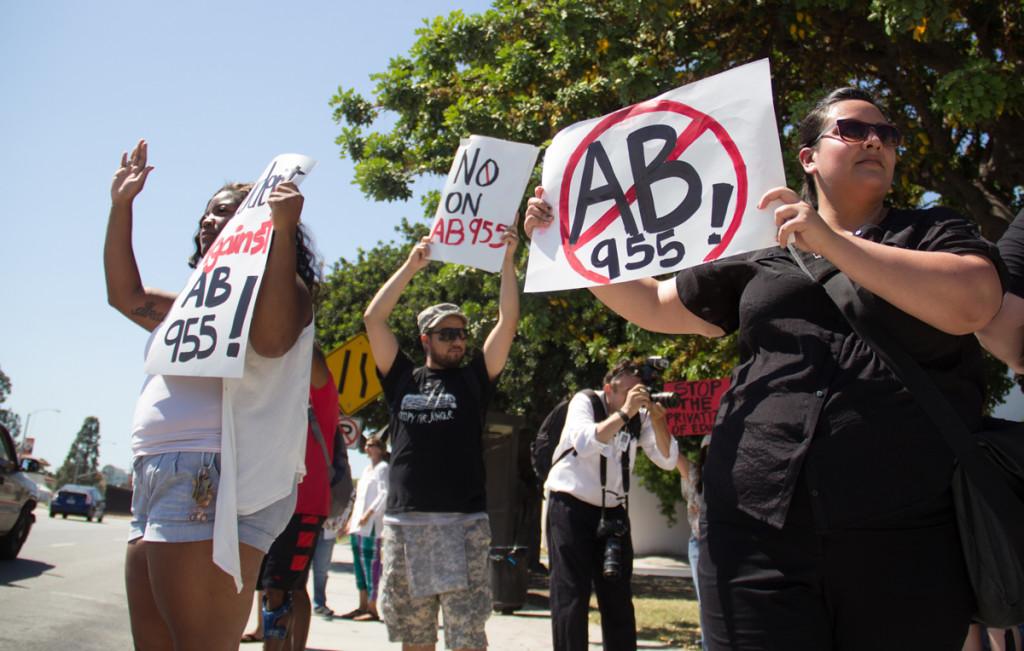A two-tiered registration system based on price will begin next January
Long Beach Community College students protest the then proposed bill.
A bill was passed that causes California Community College students to pay more money for summer and winter courses starting January 2014.
As of September 10, 2013, the Senate passes the bill AB-955, which enforces California Community Colleges to establish summer and winter courses, but for the price of $200/unit as opposed to $46/unit for nonresidential students. The piloting schools that will take this bill into effect will include College of the Canyons, Crafton Hills College, Long Beach City College, Oxnard College, Pasaden City College, and Solano Community College.
Assemblyman Das Williams, who proposed this bill, believes that it will be beneficial for students looking for a quicker graduation day, and a ladder to escape a pit of debt. Williams stated to The Daily Californian, “shortening the time students spend in school will keep student debt from rising.”
This policy is aiming to have students become more willing to take courses that become unavailable during the fall and spring semesters, believing that students will be more responsible about their money and have to worry less about financial services. With the large amount of students taking fall and spring courses, these high-priced unit courses over the winter and summer will allow students to finish the courses they were previously unable to take, and needing to finish for transferring purposes. In addition, one-third of the money funded by the $200/unit will be used towards students using BOG waivers. Williams has found a way to satisfy quick and efficient education, while keeping together low-income and high-income students.
President Obama recognizes California’s poor economy, and seeks to help it through the community colleges. By having more college graduates with bachelor degrees, more opportunities, jobs, and the movement of money will help California’s economy improve. He expects California to produce five million additional workers by 2020. However, the Public Policy Institute of California projects that the state would need an additional one million workers by the year 2025. Furthermore, AB-955 will rush students to finish their courses, obtain their degree, acquiring a job, and therefore fulfilling the need of the one million workers needed to satisfy California’s economy.
The Faculty Association of California Community Colleges (FACCC) is against this bill for reasons of legitimacy towards saving money, and the overall morality of what a community college stands for.
According to a coalition letter signed by the FACCC, “The creation of a two-tiered fee structure for credit classroom instruction sends the public a message that educational access and opportunity are only for students of financial means who can ‘pay to play.”
Agreeable opinions also float around Skyline College.
“It’s not going to help people finish faster,” said Pricsilla Sanchez of the Associated Students of Skyline College, “some people just need to take one class over summer, and they won’t be willing to pay that much for one class.”
Proportionally, a three-unit summer class costing $600 would be equivalent to an entire semester’s worth of being a full-time student.
On a morality aspect, Jeff Acidera of the EOPS of Skyline College says that a community college must stand for “access, opportunity, and equality,” and by agreeing with this bill, the morals of community colleges will be void.
He states that “by charging people more, you are going against the philosophy that is a community college.”
Tensions are high as this bill had recently been passed, and an ever-growing upset mood runs through the veins of California Community Colleges. The next question is, what will be the outcome? Will this bill actually get California out of debt? The answers will appear in the years to come.




















